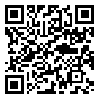Volume 32, Issue 2 (Summer 2008 2008)
Research in Medicine 2008, 32(2): 127-134 |
Back to browse issues page
Download citation:
BibTeX | RIS | EndNote | Medlars | ProCite | Reference Manager | RefWorks
Send citation to:



BibTeX | RIS | EndNote | Medlars | ProCite | Reference Manager | RefWorks
Send citation to:
Kaka Gh, , Naderi M, Sadraei SH, Jadidi Kh, Zarei A, Pour Heidari Gh, et al . Effects of betamethasone and diclofenac-Na on sulfur mustard induced conjunctival epithelial and goblet cells injuries of rabbits in acute phase . Research in Medicine 2008; 32 (2) :127-134
URL: http://pejouhesh.sbmu.ac.ir/article-1-500-en.html
URL: http://pejouhesh.sbmu.ac.ir/article-1-500-en.html
Kaka Gh 
 , , Naderi M
, , Naderi M 
 , Sadraei SH
, Sadraei SH 
 , Jadidi Kh
, Jadidi Kh 
 , Zarei A
, Zarei A 
 , Pour Heidari Gh
, Pour Heidari Gh 
 , Karimi Zarchi A
, Karimi Zarchi A 
 , Dashtnavad H
, Dashtnavad H 
 , Asadi M
, Asadi M 
 , Norouz Zadeh A
, Norouz Zadeh A 


 , , Naderi M
, , Naderi M 
 , Sadraei SH
, Sadraei SH 
 , Jadidi Kh
, Jadidi Kh 
 , Zarei A
, Zarei A 
 , Pour Heidari Gh
, Pour Heidari Gh 
 , Karimi Zarchi A
, Karimi Zarchi A 
 , Dashtnavad H
, Dashtnavad H 
 , Asadi M
, Asadi M 
 , Norouz Zadeh A
, Norouz Zadeh A 

, (email: gh_kaka@yahoo.com)
Abstract: (19266 Views)
Background: Sulfur mustard, Bis [2-chlorethyl] sulfide (HD), is one of the first chemical warfare agents to be used on a large scale. Anti inflammatory treatments might have the potential to prevent some aspects of the primary development of HD-induced lesions. The aim of the present study was to evaluate treatment effects of topically applied betamethasone (B) and diclofenac-Na (D) on the conjunctival epithelial lesions following HD exposure.
Materials and methods: A total of 36 rabbits were used. Animals were randomly divided to three control groups: (1) normal (2) solution (3) HD and three experimental groups: (4) betamethasone (5) diclofenac-Na and (6) betamethasone-diclofenac-Na (BD). In each group six animals were examined. Right eye of all animals was selected for experiment. In the experimental groups betamethasone and diclofenac-Na were applied after using HD solution. Application of drugs was performed 3 times a day for 2 weeks. Slit-lamp examinations were performed before exposure and subsequently at days 1, 2, 5, 7, and 14 by professional ophthalmologists. Animals were sacrificed after two weeks with chloroform. The eyes were enucleated. Specimens of palpebra were obtained for histological examination.
Results: There was not any significant difference between normal and solution groups. HD caused a significant decrease in goblet cells and cell infiltration in conjunctiva, injection and chemosis. All experimental groups were better than the HD group. Betamethasone in combination with diclofenac-Na was more effective than betamethasone and diclofenac-Na alone in decreasing eye injuries.
Conclusion: Combination of betamethasone and diclofenac-Na are potential candidates for the treatment of ocular lesions following HD exposure.
Type of Study: Original |
Subject:
Interdisciplinary (Educational Management, Educational research, Statistics, Medical education
Received: 2008/12/21 | Published: 2008/06/15
Received: 2008/12/21 | Published: 2008/06/15
Send email to the article author
| Rights and permissions | |
 |
This work is licensed under a Creative Commons Attribution-NonCommercial 4.0 International License. |




